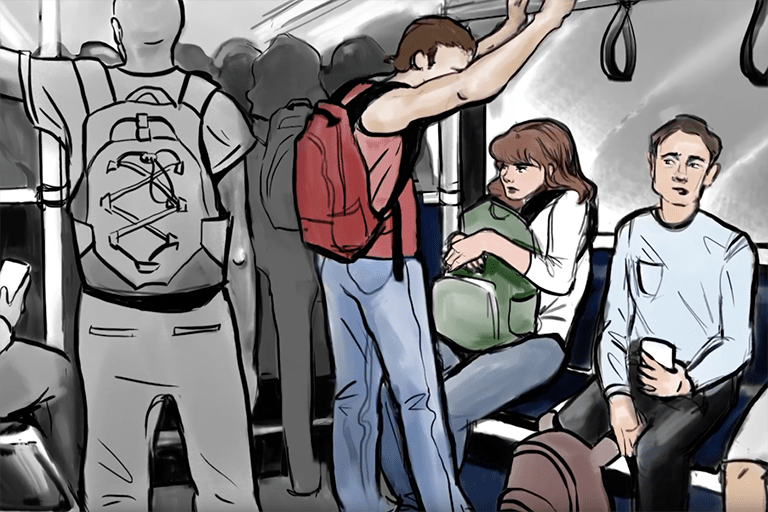Every 98 seconds, an American is sexually assaulted. Up to 15% of these assaults happen in public spaces where others are often bystanders to the abuse. What if more of those bystanders stepped up and stepped in when they noticed sexual assault or harassment taking place?
Last year, Michigan State University’s Sexual Assault and Relationship Violence (SARV) Prevention Program created a voluntary workshop for MSU juniors and seniors on bystander intervention. The program, funded by a grant from the Governor’s Office, promotes safety and improves quality of life by educating students on sexual assault and relationship violence, eliminating violence on campus, empowering students to become advocates for a non-violent community and positively affecting social change.
Communicating to Students
Looking for a way to communicate to students on the importance of bystander intervention, the program reached out to the Media Sandbox for help creating a series of training videos that could be used to talk to students.
“These videos served as a way to garner thought and discussion around what you would do in certain situations,” said Leah Short, Program Specialist for the Sexual Assault and Relationship Violence Program. “We wanted to include an engaging component to the videos, to create conversation around bystander intervention.”
Sandbox student Liv Bishop, designed and illustrated the videos based on real-world harassment situations. She worked off of scripts provided by SARV and used the dialogue to guide her designs. Bishop said she had certain deliverables she had to meet, like how many bystanders were present and the environment, such as a party scene, bus stop or pathway.
“Some scenes weren’t as fully fleshed out, so I was able to help concept what environment might be best for the dialogue,” said Bishop. “For some environments, I drew from personal experience as an MSU student. Places where I’ve seen sexual harassment take place or have felt threatened myself, such as a lonely path through campus or a crowded bus where personal space is already being invaded.”
Helping to Start Conversations
The SARV staff reported that they’ve received positive feedback on the videos from both high school and college students, noting that they help start conversations.
“From high schools, we received positive responses,” said Short. “From college-age students, we were able to use the videos to create a dialogue about situations not often talked about.”
Bishop feels gratified by her work on this project, saying that although she hasn’t had the misfortune of being a victim of sexual assault, she has experienced harassment, as have her friends.
“Being a young woman on a college campus, especially at parties, can feel threatening and dangerous,” said Bishop. “The same risk can run for guys as well. It’s everyone’s problem, and I hope these videos make strides in preventing harassment and assault on campus.”
The SARV bystander intervention videos are available on the SARV website as well as on ComArtSci’s YouTube channel. We encourage you to share these videos and use them as you see fit to help educate on the importance of bystander intervention.
By Nikki W. O'Meara
